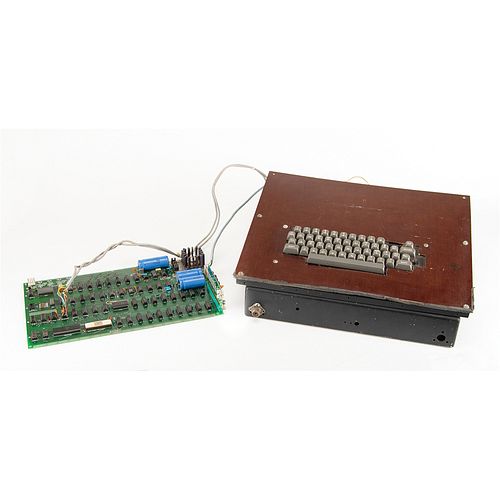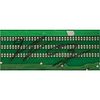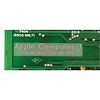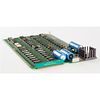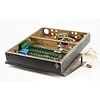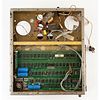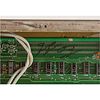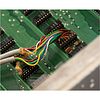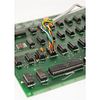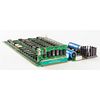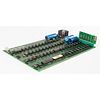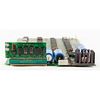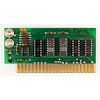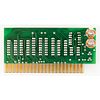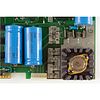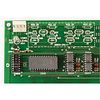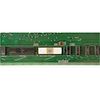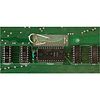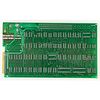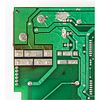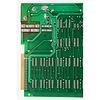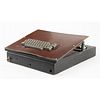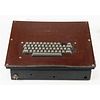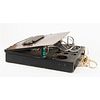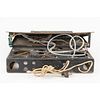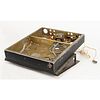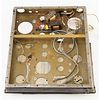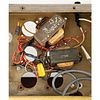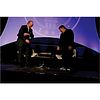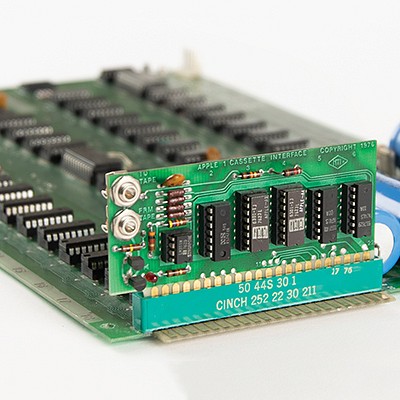Apple-1 Computer Signed by Steve Wozniak
Two ways to bid:
- Leave a max absentee bid and the platform will bid on your behalf up to your maximum bid during the live auction.
- Bid live during the auction and your bids will be submitted real-time to the auctioneer.
Bid Increments
| Price | Bid Increment |
|---|---|
| $0 | $5 |
| $50 | $10 |
| $200 | $25 |
| $500 | $50 |
About Auction
Aug 24, 2023
RR Auction support@rrauction.com
- Lot Description
A sought-after fully operational Apple-1 computer (also commonly known as the Apple I, or Apple Computer 1), complete with its period custom-built case, keyboard, and power supply. This Apple-1 is easily identifiable by two small holes which have been used to secure the keyboard cable when mounted in the case, and by Steve Wozniak’s signature, "Woz," in the prototype area, signed during a 2017 event at Bryant University.
This Apple-1 was acquired by the current owner in 1980 at the Computer Hobbyist Show in Framingham, Massachusetts, and the computer was in use throughout the 1980s. It was brought to an operational state by Corey Cohen at the myapplecomputer labs in May/June 2023, and a video of it running and functioning is available upon request. A comprehensive, technical condition report prepared by Cohen is available to qualified bidders.
The set includes:
• original Apple-1 'NTI' board
• original Apple Cassette Interface (ACI)
• period aluminum and laminate paneling case featuring a built-in keyboard, with Triad and Stancor transformers
• modern replicas of the Apple-1 Operation Manual and Apple Basic User Manual
• period Xerox copy of the Apple-1 Operation Manual
• compatible RCA video monitor (circa 1987) with Apple-1 video cable
• photograph of Steve Wozniak signing the board in 2017
This Apple-1 has the original rare white MOS MCS6502 microprocessor dated the 15th week of 1976 in good condition, and a replacement Motorola MC6820P dated the 24th week of 1977. The Apple-1 memory and IO jumpers have been wired to support executing Apple Basic on an 8K memory system. The wiring and pads are consistent with systems sold with 8k of system memory at purchase time with the Apple Cassette Interface (ACI) and Apple-1 Basic (Integer Basic). There is an additional IO Jumper to enable an unknown accessory at memory bank A000. All memory configuration solder pads are intact and un-damaged. This Apple-1 board has had some repairs, including the replacement of two power regulators and the MC6820P, and a few corrected circuit traces.
The Apple-1 was originally conceived by Steve Jobs and Steve ‘Woz’ Wozniak as a bare circuit board to be sold as a kit and completed by electronics hobbyists, their initial market being Palo Alto’s Homebrew Computer Club. Seeking a larger audience, Jobs approached Paul Terrell, owner of The Byte Shop in Mountain View, California, one of the first personal computer stores in the world. Aiming to elevate the computer beyond the realm of the hobbyist, Terrell agreed to purchase 50 Apple-1 computers, but only if they were fully assembled. The Apple-1 thus became one of the first ‘personal’ computers which did not require soldering by the end user—however, they did not come with a power supply, case, keyboard, or monitor, leaving these up to the end user. Thus, homemade hobbyist cases like this are both individually unique and integral to the story of the Apple-1. This case is designed to have the Apple-1 board mounted beneath the keyboard area, with the power supply housed in the rear; the rear of the case has provisions for connection to the Apple Cassette Interface in/out. Although the keyboard has three broken key stems, it remains fully functional.
All together, over a span of about ten months from 1976-77, Steve Jobs and Steve Wozniak produced about 200 Apple-1 computers, selling 175 of them. Building on that success, they introduced the Apple II in June 1977, which became one of the world's first highly successful mass-produced microcomputer products. The Apple-1 is not only a marvel of early computing ingenuity, but the product that launched what is today one of the most valuable and successful companies in the world. - Shipping Info
-
Bidder is liable for shipping and handling and providing accurate information as to shipping or delivery locations and arranging for such. RR Auction is unable to combine purchases from other auctions or affiliates into one package for shipping purposes. Lots won will be shipped in a commercially reasonable time after payment in good funds for the merchandise and the shipping fees are received or credit extended, except when third-party shipment occurs. Bidder agrees that service and handling charges related to shipping items which are not pre-paid may be charged to a credit card on file with RR Auction. Successful international Bidders shall provide written shipping instructions, including specified Customs declarations, to RR Auction for any lots to be delivered outside of the United States. NOTE: Declaration value shall be the item’(s) hammer price and RR Auction shall use the correct harmonized code for the lot. Domestic Bidders on lots designated for third-party shipment must designate the common carrier, accept risk of loss, and prepay shipping costs.
-
- Buyer's Premium



 EUR
EUR CAD
CAD AUD
AUD GBP
GBP MXN
MXN HKD
HKD CNY
CNY MYR
MYR SEK
SEK SGD
SGD CHF
CHF THB
THB